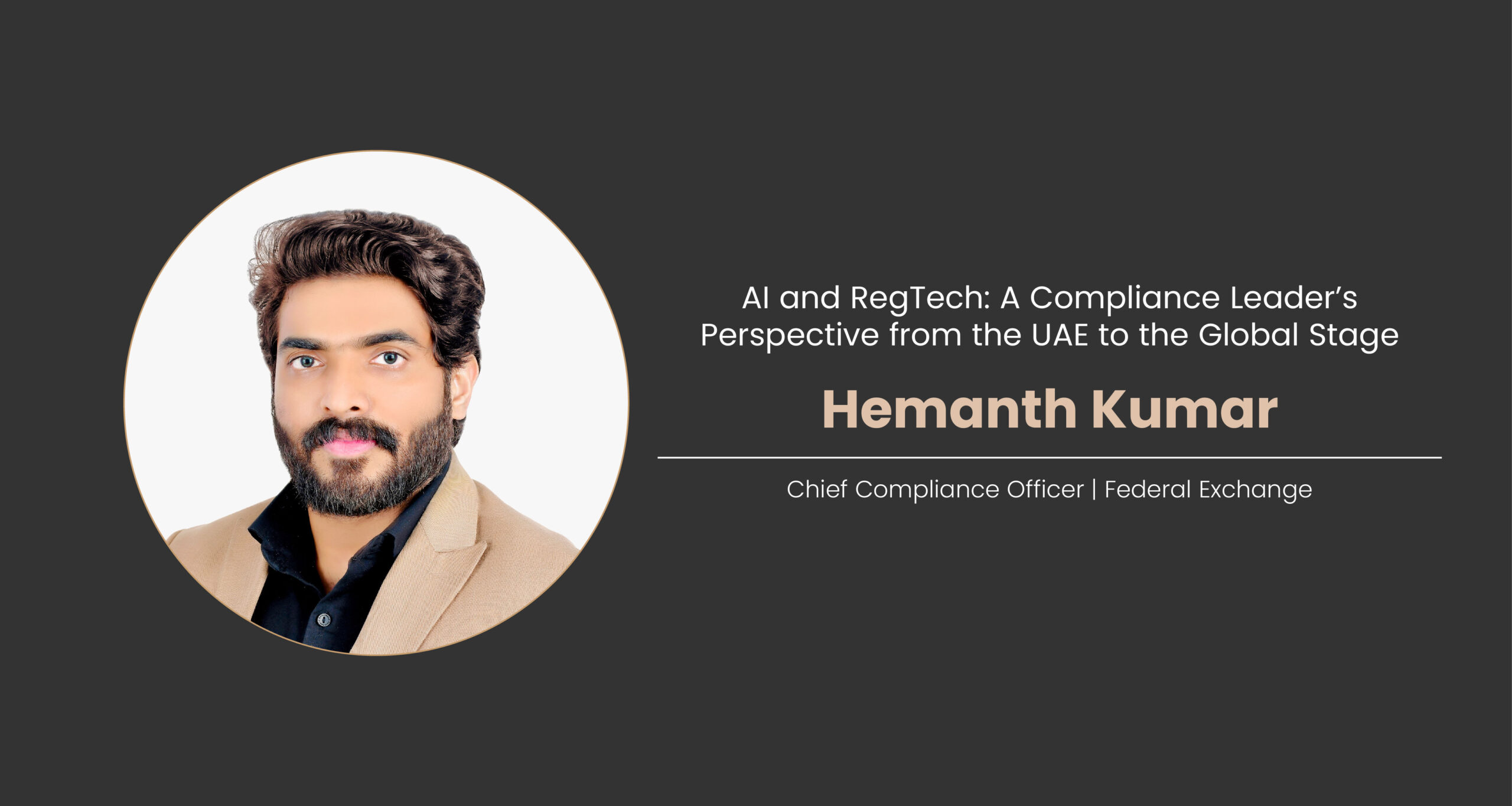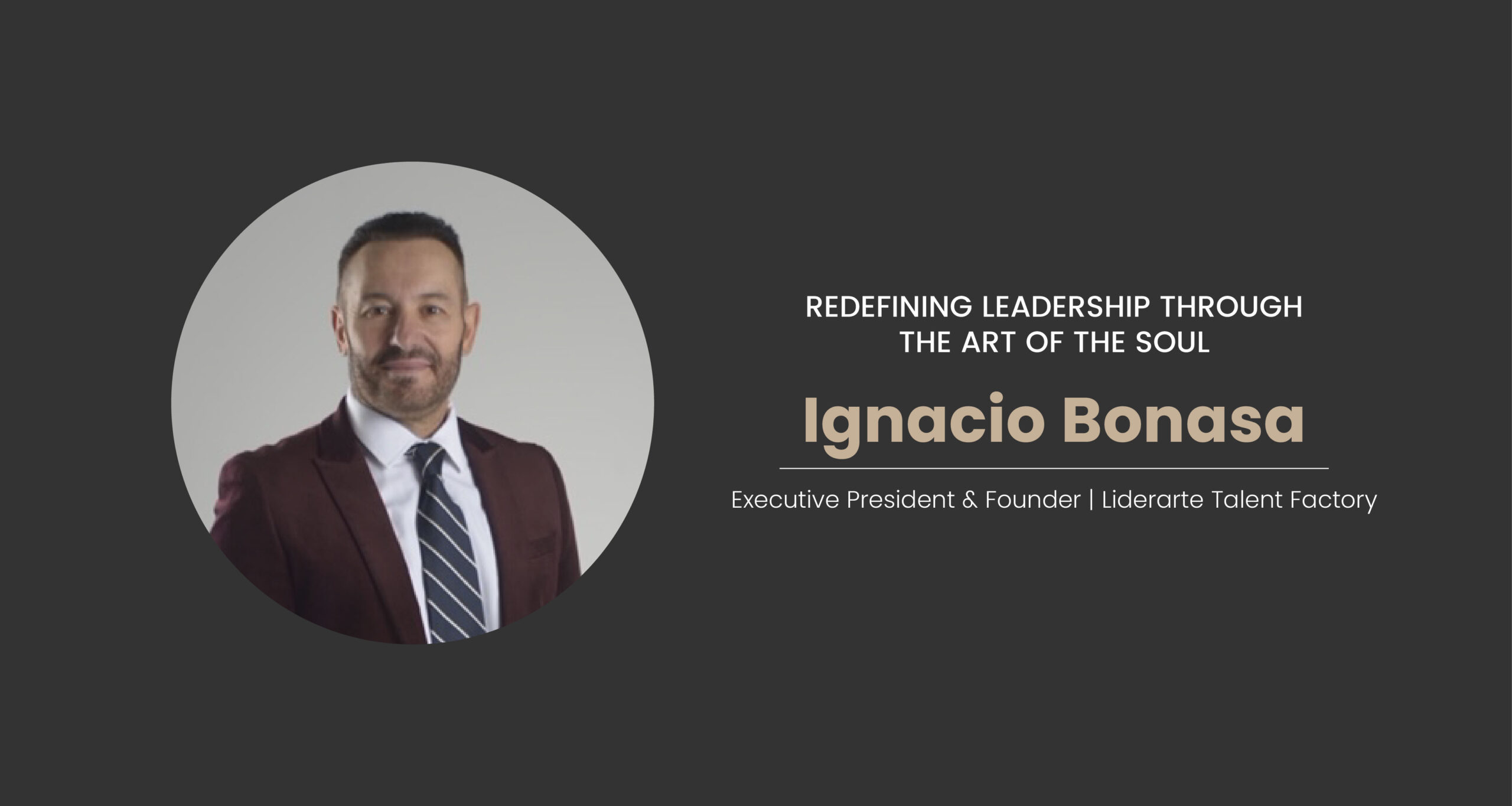I am Hemanth Kumar, currently serving as Chief Compliance Officer at Federal Exchange in the United Arab Emirates. Over the last 15 years, I have worked across compliance, risk management, and regulatory technology, spanning the UAE, India, Hong Kong, Singapore, and the UK. I hold certifications including CAMS, CRCMP, ICA Specialist in AI Compliance, and CCE (Crypto Expert).
Much of my career has been shaped by exposure to global standards FATF framework and its application across regions. I have also had the privilege of contributing thought leadership on compliance and technology innovation, including perspectives on RegTech and AI integration.
As someone deeply engaged with both traditional financial frameworks and emerging regulatory expectations in the virtual asset space (under regulators such as VARA and ADGM), I approach compliance not only as a rulebook-driven responsibility but as a human-led mission to safeguard trust in financial systems.
The Evolving Compliance Landscape
In today’s globalized economy, compliance is no longer a back-office function — it is a strategic pillar of organizational resilience. FATF standards have created a common global language, but implementation varies widely across jurisdictions.
The UAE, where I currently practice, has emerged as a regional hub by aligning with FATF’s evolving expectations. The country’s removal from the FATF grey list in 2024 was not accidental — it was the result of targeted reforms in supervision, risk-based approaches, and cross-border cooperation.
What this demonstrates is simple: compliance is no longer just about “following the rules.” It is about proving effectiveness, demonstrating that systems and processes are not only in place but are actually preventing illicit financial flows.
Yet the challenge remains: the sheer scale and complexity of transactions in a borderless financial system make it humanly impossible to monitor risks without technological augmentation. This is where RegTech and AI enter the conversation.
AI as a Game-Changer in Compliance
Artificial intelligence is not science fiction in compliance — it is already here. From sanctions screening to transaction monitoring, from biometric onboarding to predictive analytics, AI is rewriting the way institutions detect, assess, and mitigate risks.
Take sanctions screening as an example. Traditional systems often generate overwhelming false positives, consuming valuable analyst hours. AI-driven alert calibration, on the other hand, can reduce false positives by learning patterns, refining rules, and highlighting true risks with higher accuracy.
Similarly, in transaction monitoring, AI modules can detect anomalies that rule-based engines miss — such as hidden layering in cross-border remittances or crypto-to-fiat conversion risks. AI’s predictive capability enables compliance teams to move from reactive investigations to proactive prevention.
But here lies the caution: AI is not infallible. Algorithmic bias, lack of explainability, and over-reliance on automation can create blind spots. In my experience, the most effective compliance programs are those that treat AI not as a replacement for human judgment but as an enhancement of it.
RegTech and Human Judgment: Striking the Balance
RegTech has transformed compliance efficiency, but technology alone cannot safeguard integrity. I often remind my teams that systems are only as strong as the values of the people who design, monitor, and interpret them.
Over the years, I have seen cases where institutions invested heavily in systems yet failed compliance audits — not because the technology was inadequate, but because governance, accountability, and ownership were missing.
This is where ideology and leadership matter. Compliance leaders must ensure that RegTech solutions are not simply deployed but meaningfully integrated into a culture of responsibility. AI can scan millions of transactions in seconds, but it takes a human leader to ask: Are we asking the right questions? Are we willing to act when the answers are uncomfortable?
For me, the intersection of technology and human ethics is where the true future of compliance lies.
Global Lessons from the UAE Corridor
Working in the UAE has given me a front-row seat to one of the most dynamic regulatory environments in the world. The UAE is unique because it must manage traditional banking, sprawling remittance corridors, and the fast-emerging virtual asset ecosystem simultaneously.
When FATF called for stronger action, the UAE responded with entity-wide risk assessments, strengthened sanctions frameworks, and dedicated virtual asset regulations through VARA. These were not mere check-the-box exercises — they were structural changes aimed at embedding compliance into the DNA of institutions.
For example, under VARA, Virtual Asset Service Providers (VASPs) must demonstrate not just KYC procedures but ongoing monitoring, transaction surveillance, and travel rule compliance. This mirrors FATF’s Recommendation 15 but adds a local layer of accountability tailored to Dubai’s market.
The lesson for global compliance leaders is clear: adopting FATF standards is not enough. Each jurisdiction must adapt those standards to its unique risk environment, and each institution must internalize them as part of daily operations.
Future Outlook: AI, Trust, and the Human Role
As compliance professionals, we often discuss what technology can do. I believe the next conversation must also focus on what technology should not do.
AI should not replace the ethical compass of human judgment. AI should not dilute accountability by allowing leaders to defer responsibility to algorithms. And AI should never become an excuse for complacency in governance.
The future of compliance will be defined by hybrid models — where AI provides the speed, scale, and precision, and humans provide the judgment, values, and courage to act. Regulators, too, are evolving. The EU’s AI Act, for instance, requires explainability and accountability in high-risk AI applications. This is a reminder that even as we innovate, we must remain transparent.
For me, the essence of leadership in this space is about more than compliance. It is about trust. Institutions that use AI responsibly, transparently, and ethically will not only satisfy regulators — they will earn the confidence of customers, partners, and the global community.
Conclusion
We are entering a new era where compliance cannot be separated from technology, and technology cannot be separated from values.
AI and RegTech will continue to redefine the efficiency of compliance programs, but they cannot replace the role of ethical leadership. At the end of the day, compliance is not about machines or systems — it is about people protecting people, safeguarding economies, and preserving the integrity of global financial systems.
As someone who has lived through audits, regulatory reforms, and cross-border challenges, my conviction is simple: AI is an enabler, but human leadership is irreplaceable.







